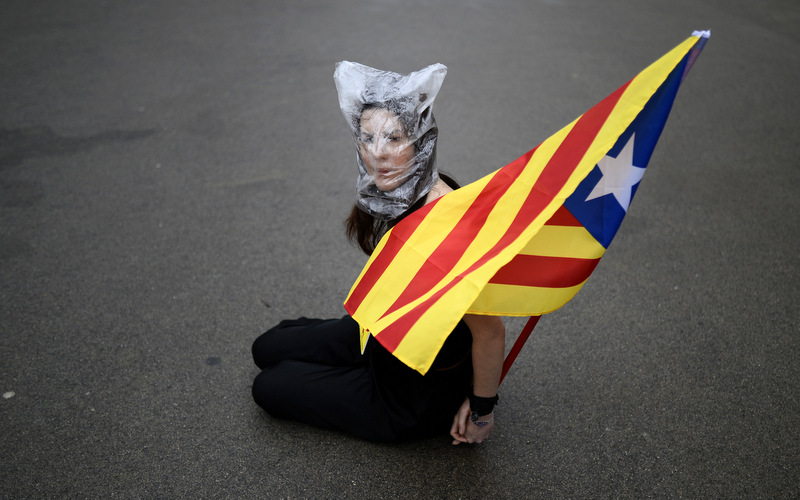
BARCELONA, Spain — From grim outer-city high-rise blocks to the modernist mansions of the Eixample neighborhood and the Gothic Quarter’s medieval tenements, Barcelona is draped in flags.
The proliferation of banners is a side-effect of the debate raging across the city — and the wider Catalonia region — over the prospect of breaking away from Spain.
The regional government plans to let citizens vote in a November referendum on independence. Spain’s central government in Madrid says that’s unconstitutional and has vowed the referendum will never take place.
While the argument rages, Barcelona’s citizens are nailing their colors to the mast, or at least hanging them from their windows.
“Oh yes, sales are up here, we’re selling much more than usual in Catalonia,” says Rosa Roda of flag maker Atlantida Daro, which last year celebrated 100 years of stitching banners in Barcelona.
The diversity of standards fluttering across the city is causing confusion for visitors, forcing Barcelona tourist guides to inform bemused tourists of the various flags’ significance.
Here’s a brief explainer of Barcelona’s battle of the banners and what it means for the future of Catalonia, Spain and Europe:

The Estelada is the Catalan separatists’ standard and the most common flag seen flapping from Barcelona homes. Roda says it’s her company’s best seller in the city, with more than 500 a week flying off shelves in the run up to big Catalan national day demonstrations in the last two Septembers. In stores around town, it’s also available on beach towels, T-shirts, cigarette lighters, tuques and Christmas tree decorations. The similarity to Cuba‘s flag is no coincidence — it was first adopted by Catalan exiles inspired by the Caribbean island’s war of independence from Spain in the 1890s. However, reports that an anti-independence businessman holds a patent on the design is causing anguish among separatists.

The official flag of the Spanish autonomous region of Catalonia is known as the Senyera. Flown from official buildings by regional authorities, it’s also commonly seen hanging from private homes and may be flown by Catalans who support independence and those who favor maintaining the region within Spain. A symbol of Catalan resistance during the Spanish dictatorship of Francisco Franco from 1939 to 1975, these days those flying it rather than the Estelada can face suspicion of insufficient commitment to the Catalan cause.
Spain’s national flag. Catalan separatists resent the sight of it flying over the city from the roofs of official buildings housing representatives of Spain’s central authorities. Also occasionally spotted flying from private homes by supporters of Catalonia’s continued integration into Spain.
Leftist supporters of Catalan independence prefer to use a modified version of the Estelada flag, replacing the white star with red.

The flag of the short-lived Spanish Republic crushed by Franco’s rightist forces in the Spanish Civil War of 1936-1939. A surprisingly good seller, according to Roda, popular among left-wingers who may want to keep a link with Spain, but oppose the Spanish monarchy.

The European Union flag. EU officials say Catalonia, Scotland or any other region seeking to break away from an EU country must automatically leave the Union and re-apply for membership. The process could take years and Catalonia would need the approval of all EU members — including Spain — before it’s let back in. The risk of economic and diplomatic isolation that entails has many Catalans worried and could be a powerful disincentive to a vote for independence. The Catalan government argues an independent state should be allowed to stay in the EU.

Barcelona’s city flag, combining the Catalan colors with the symbol of the region’s patron saint Sant Jordi (AKA St. George).

This is banner that gets many Catalans’ blood racing: the flag of Futbol Club Barcelona, the city’s beloved, world-beating soccer club. Barca has long been a symbol of Catalan identity and fans commonly wave the separatist flag at matches. However, some fear Catalan independence would mean the club’s ejection from the lucrative Spanish league and an end to regular El Clásico matches against arch-rival Real Madrid.
(All images from Wikimedia Commons)
This article first appeared on Global Post.

